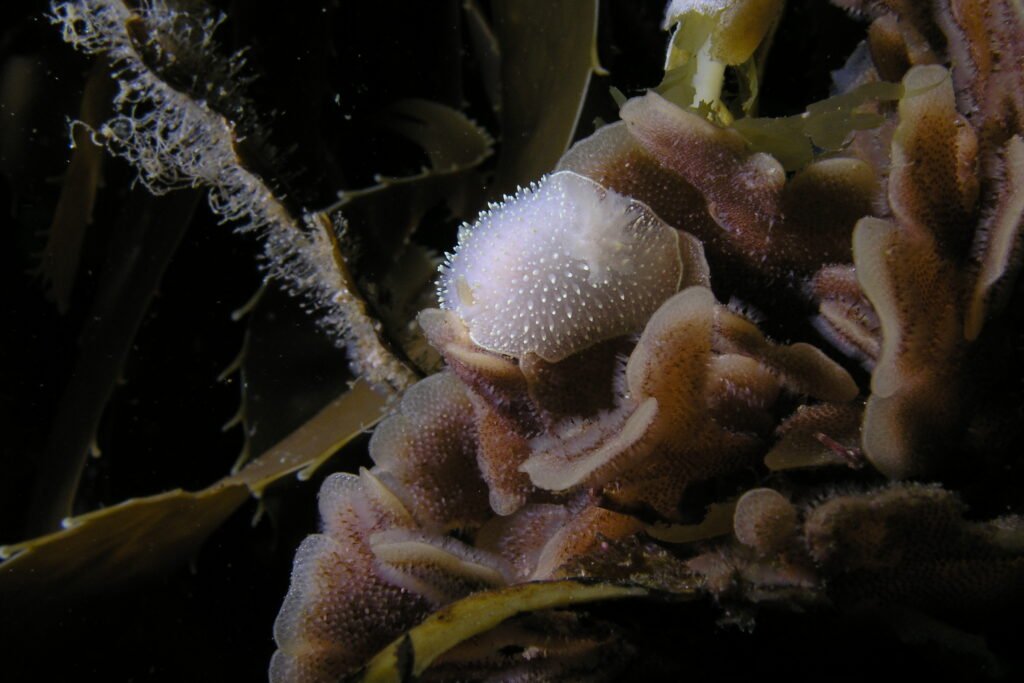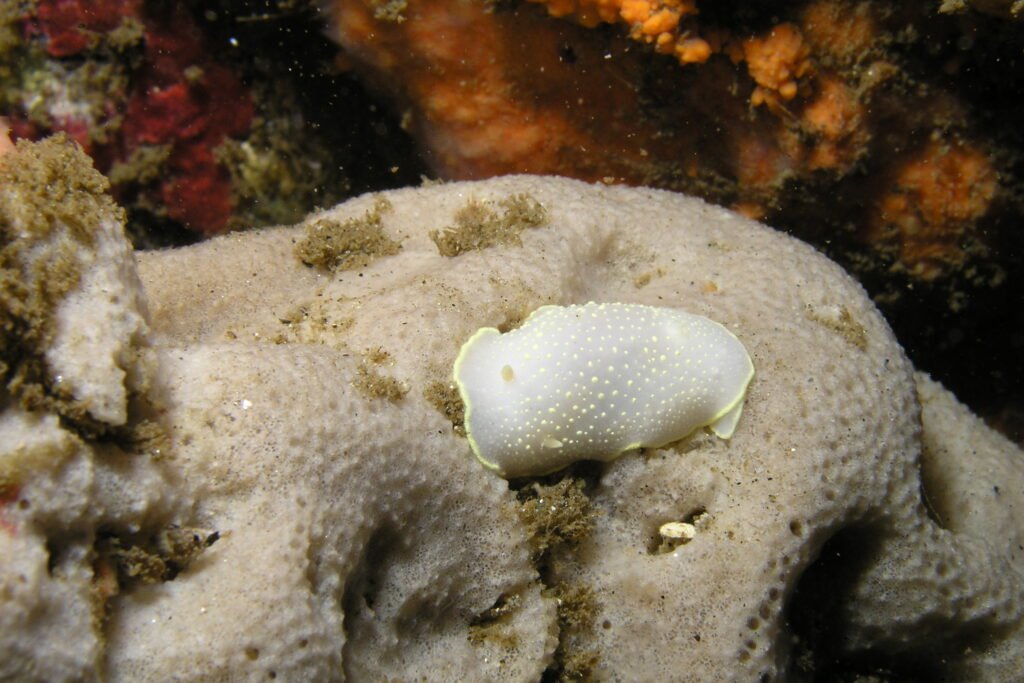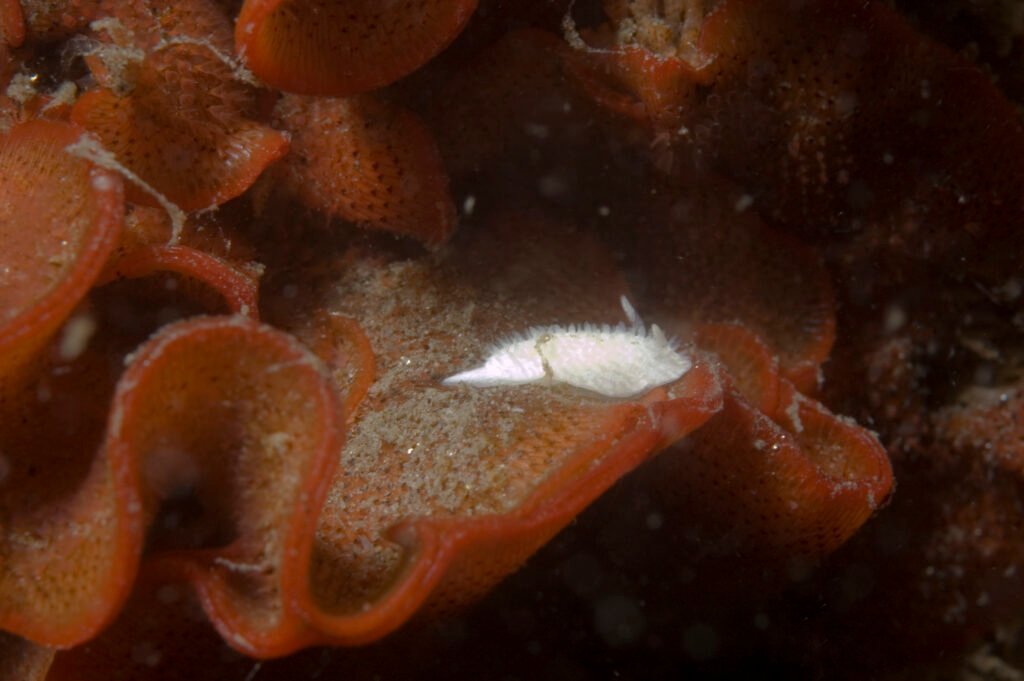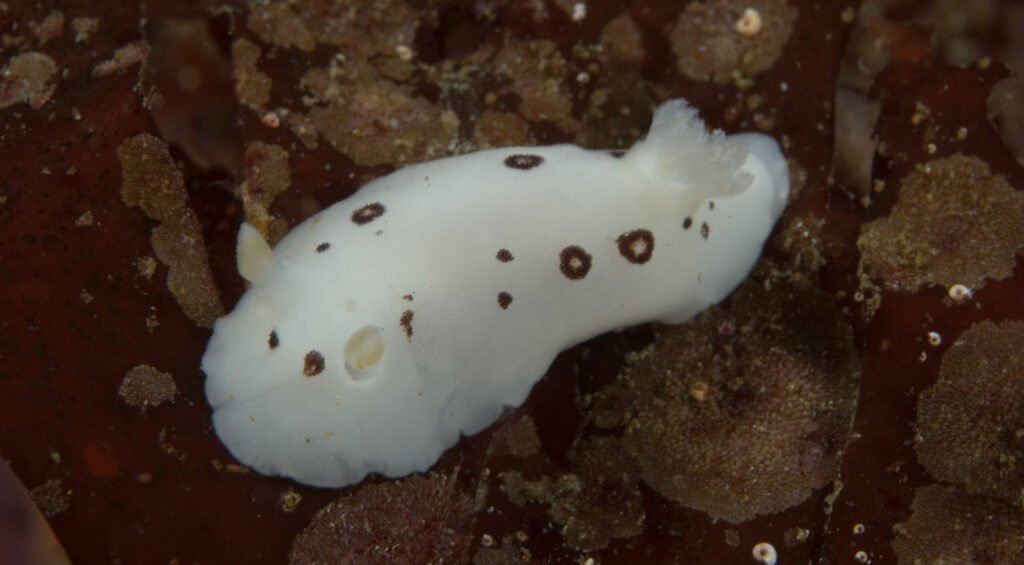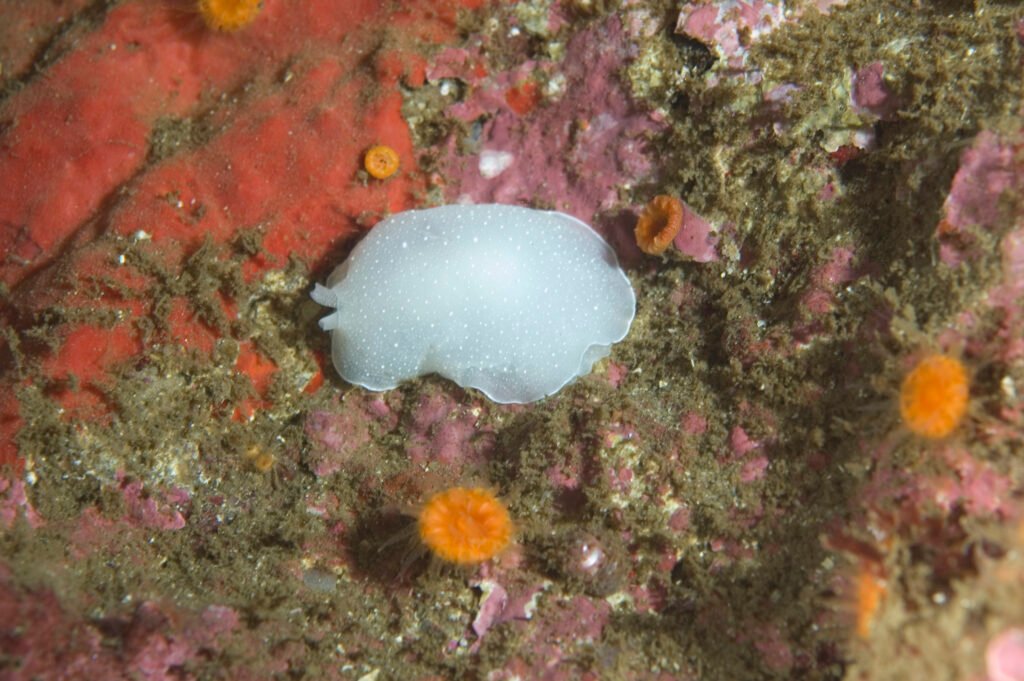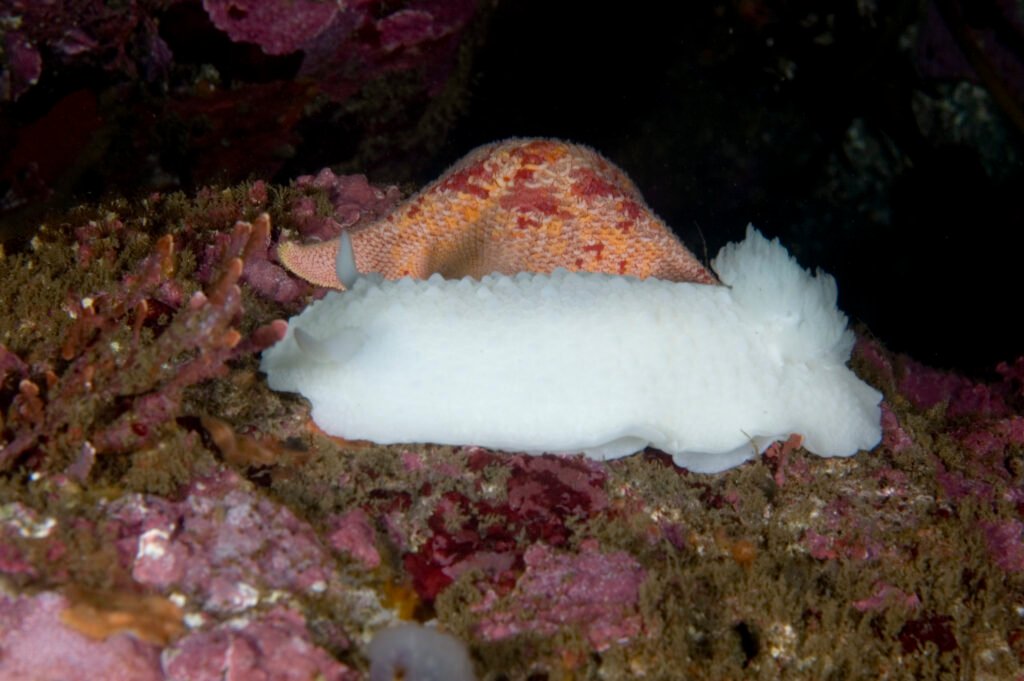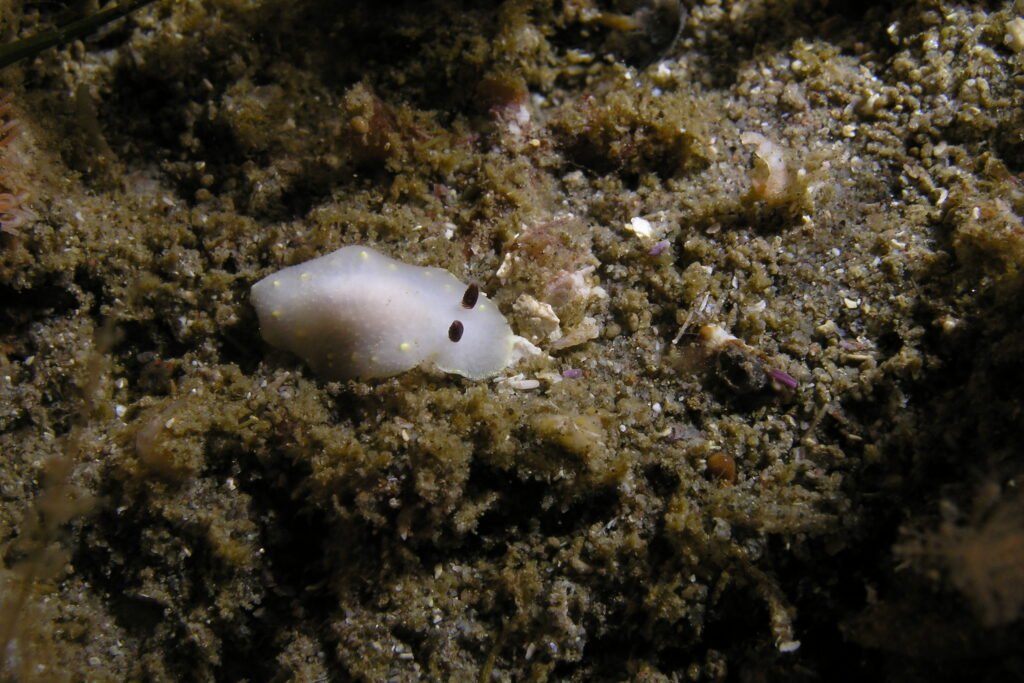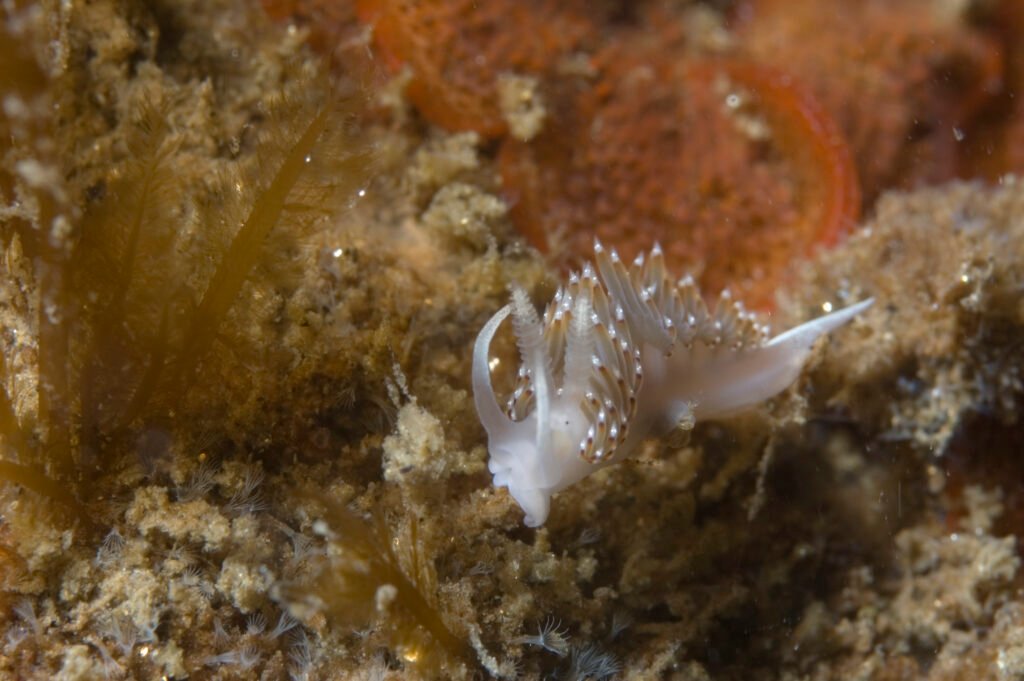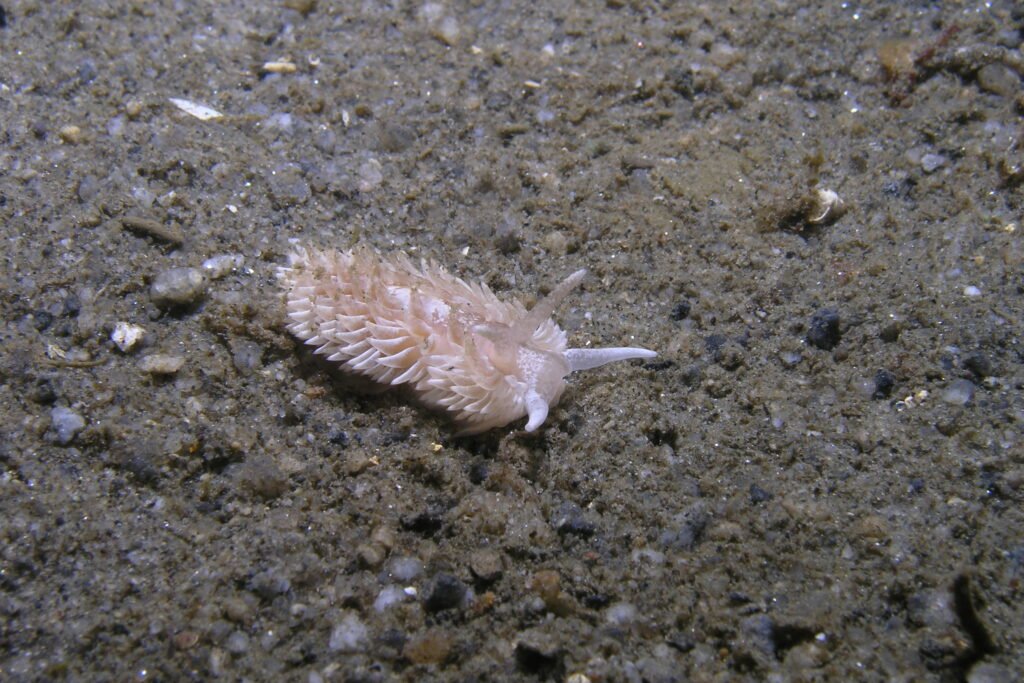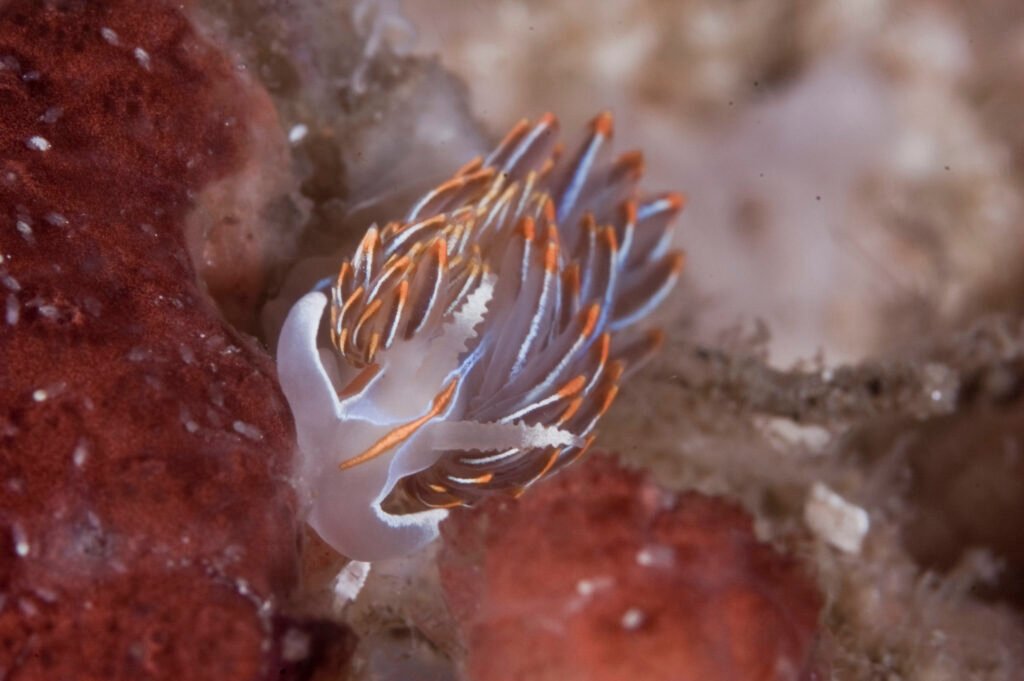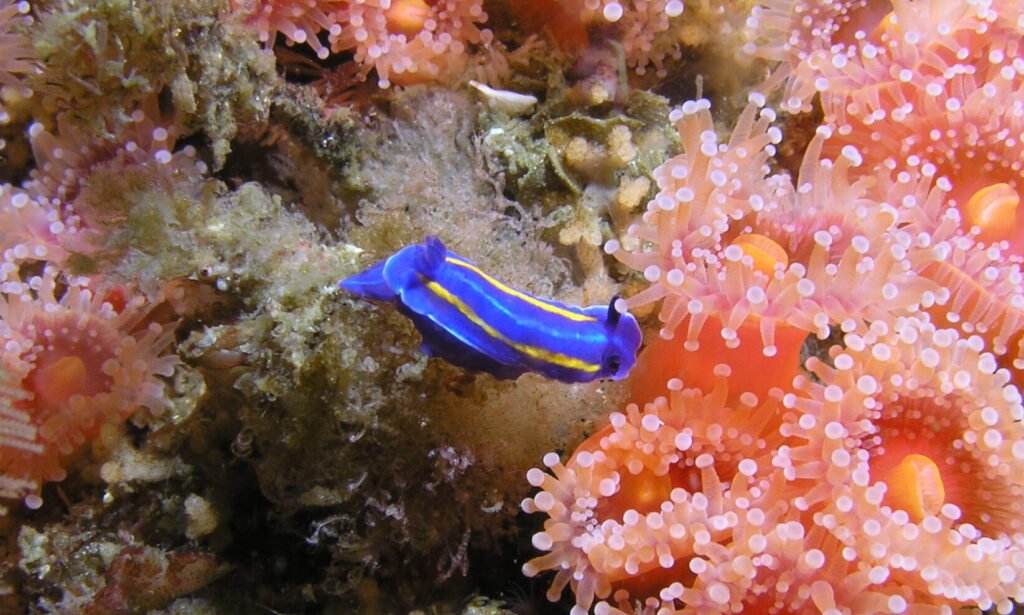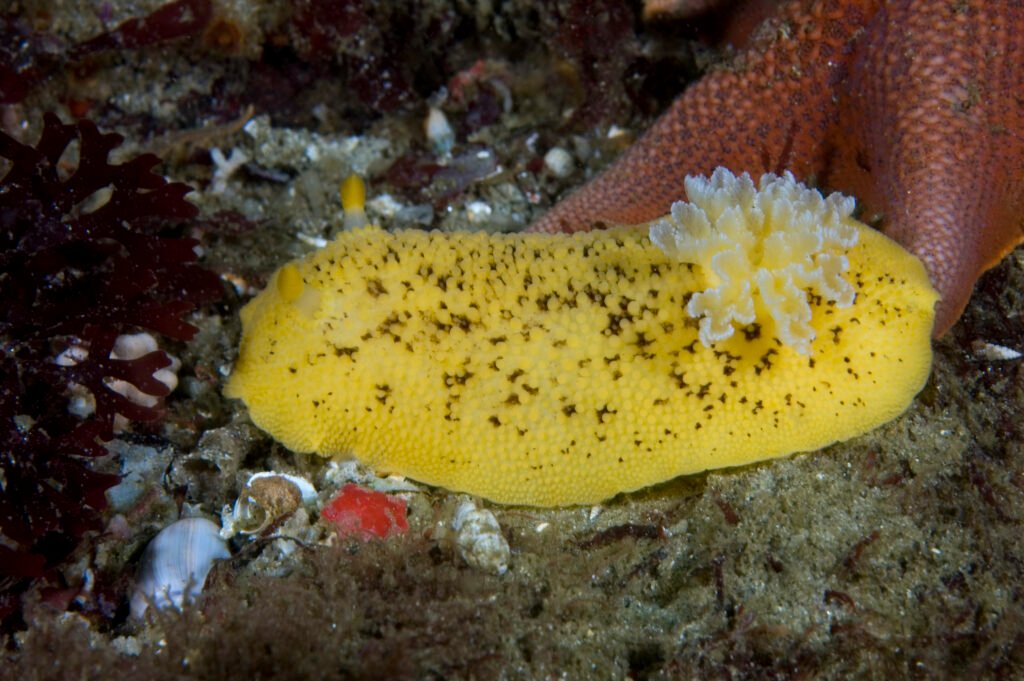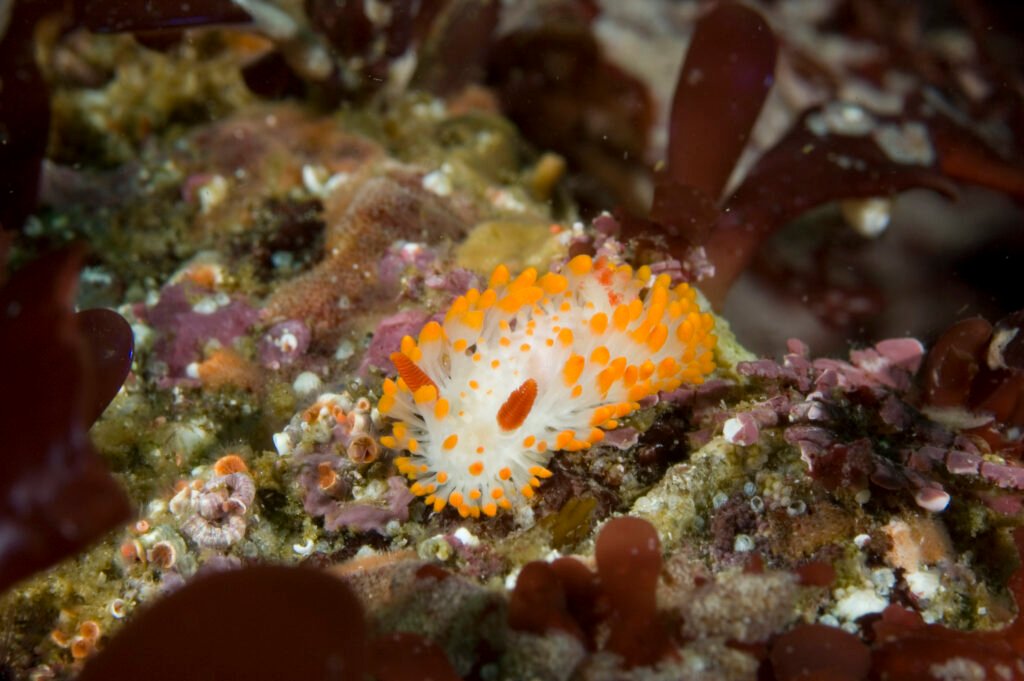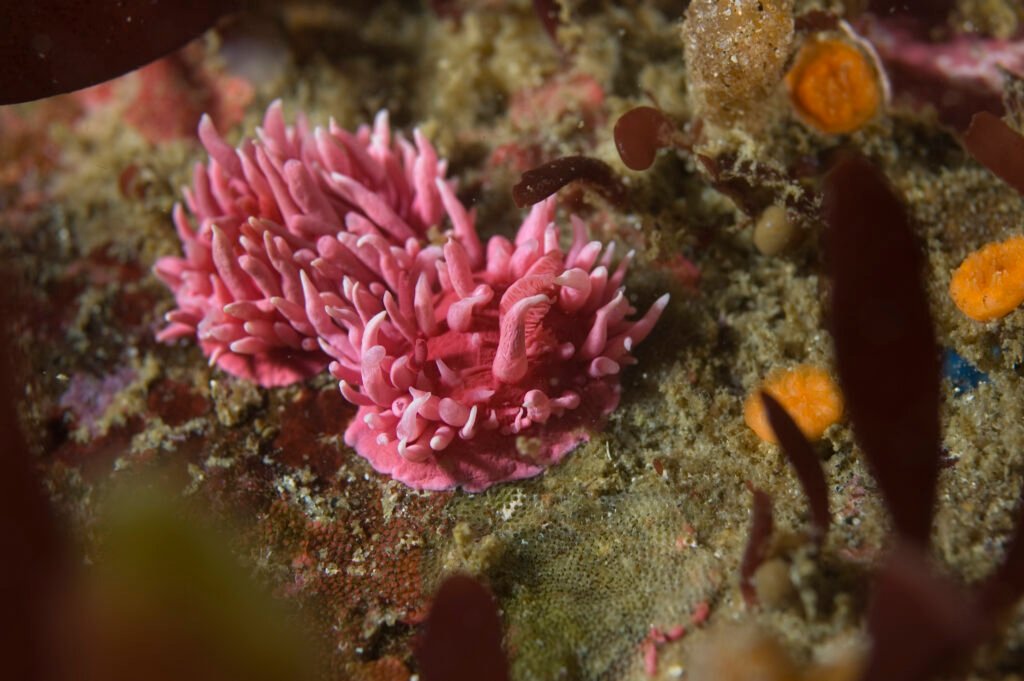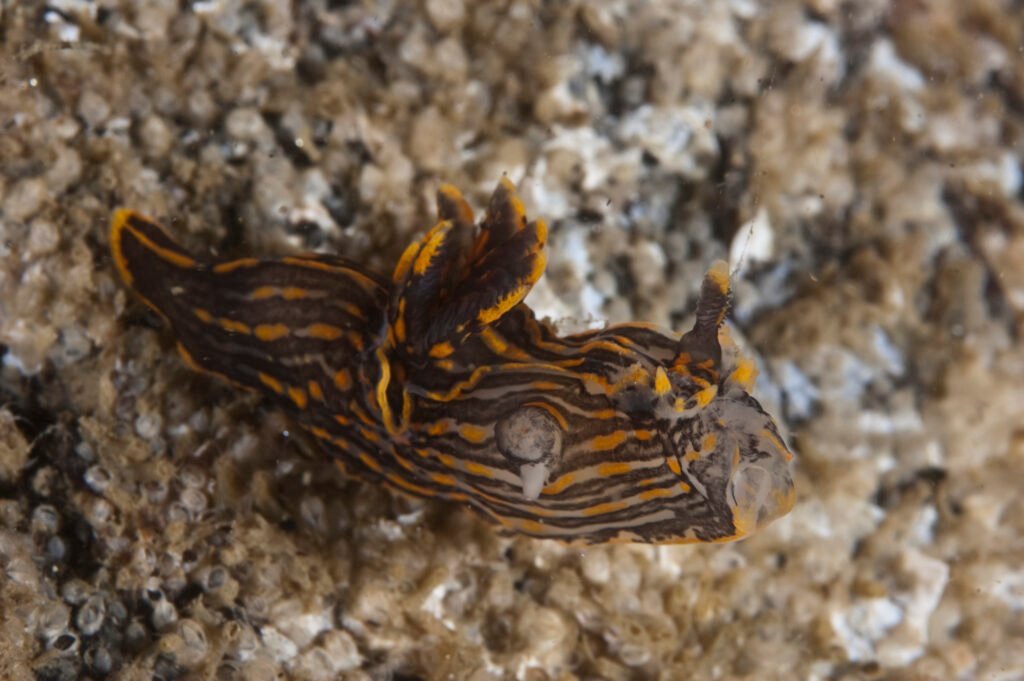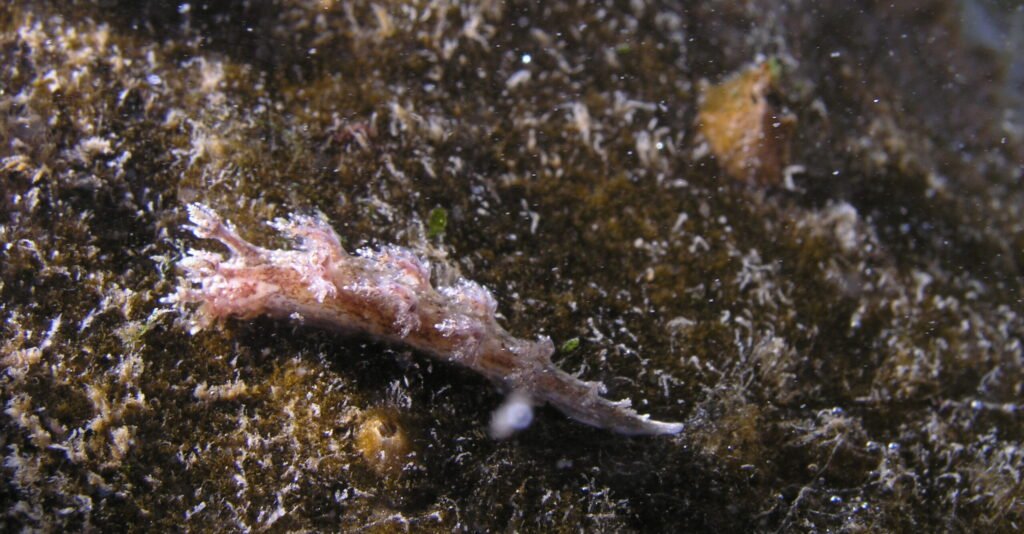Physical Description
Hudson’s Dorid, typically less than 20mm but occasionally exceeding 30mm in length, presents a whitish dorsum adorned with numerous pointed conical tubercles tipped with yellow. A distinct yellow band encircles the margin of the dorsum. Its long rhinophores feature approximately 22-24 lamellae, while its bipinnate branchial plumes, numbering 5, appear greyish-white, often with yellow tips. Notably, the species boasts large and auriculate labial tentacles, extending nearly to the edge of the dorsum.
Habitat and Geographical Range
Found along the eastern Pacific coast, Hudson’s Dorid inhabits suitable marine environments within its geographic range. It may be encountered in various coastal habitats within this region.
What They Eat and How They Breed
Feeding habits likely include consuming small invertebrates or algae, typical of many nudibranch species. Reproduction involves mating behavior, with individuals exchanging sperm. After fertilization, females lay eggs, which are typically deposited in gelatinous masses on appropriate substrates. Upon hatching, larvae undergo a pelagic stage before settling on the ocean floor.
Similar Nudibranchs
There are several species of white dorid nudibranchs found in Monterey. For species often mistaken for the Hudon’s Dorid, check out these links.
Yellow-Edged Cadlina
Explore the captivating features of the Yellow-edged Cadlina, a nudibranch species native to the eastern Pacific coast, showcasing cream-to-yellow hues and distinct tubercle patterns.
Ridge-tailed Dorid
Discover the Ridge-tailed Dorid, a fascinating nudibranch species found along the eastern Pacific coast. Learn about its physical characteristics, habitat, diet, breeding habits, and more.
San Diego Dorid
The San Diego Dorid has an oval body and varied coloration, often found along the eastern Pacific coast feeding on sponges.
White Berthella
Discover the White Berthella, Berthella californica, along the eastern Pacific coast. Learn about its appearance, habitat, diet, reproduction, and interaction with humans.
White Knight Dorid
Discover the elegant White Knight Dorid, a large nudibranch species with a pure white appearance, often exceeding 100mm in length, found along the eastern Pacific coast.
Yellow-Spotted Cadlina
Discover the mesmerizing features of the Yellow-spotted Cadlina, a nudibranch species native to the eastern Pacific coast, adorned with lemon-yellow dots on a cream-colored backdrop.
